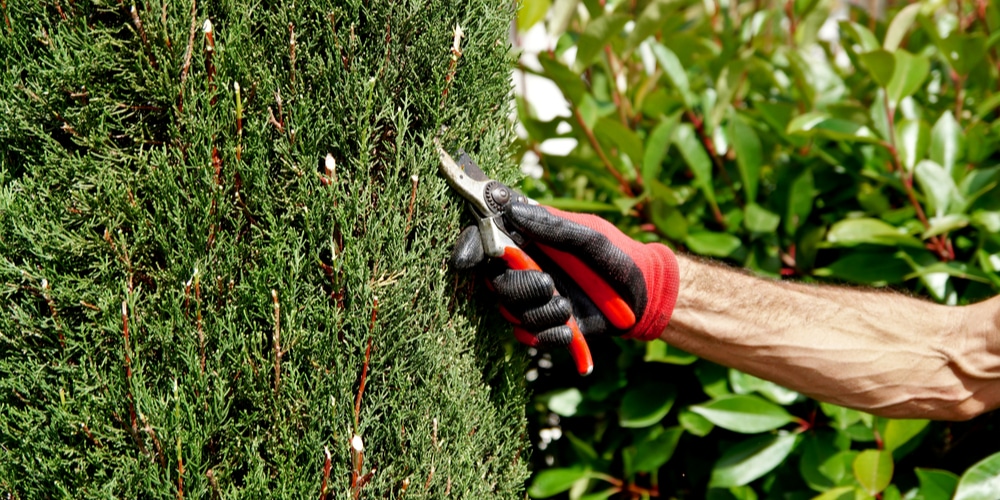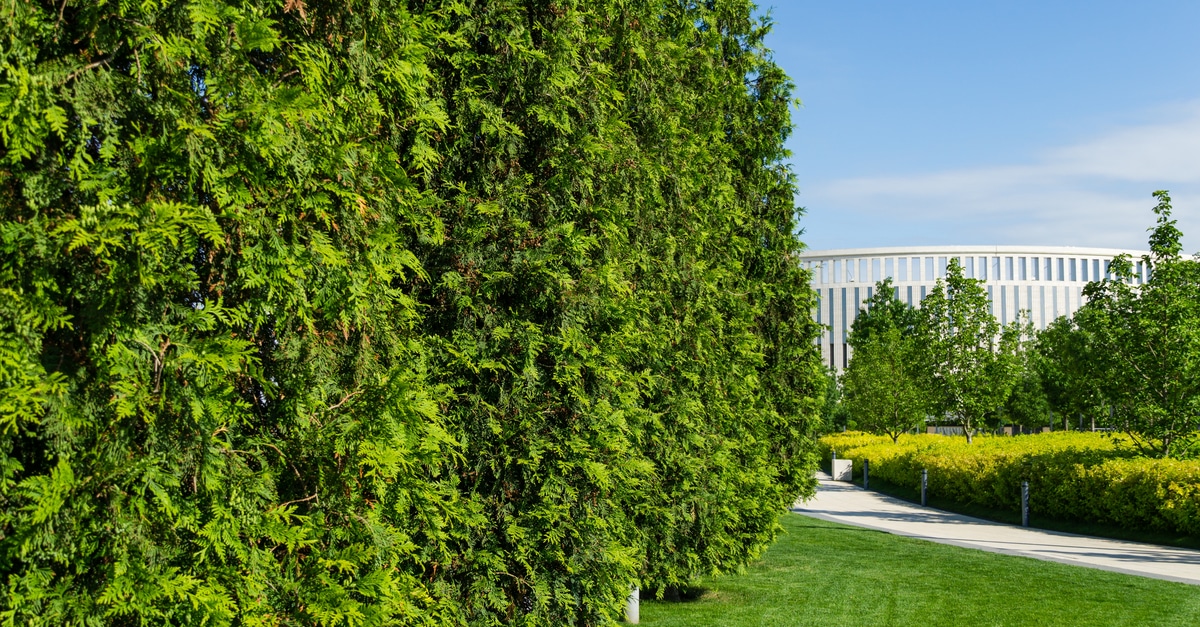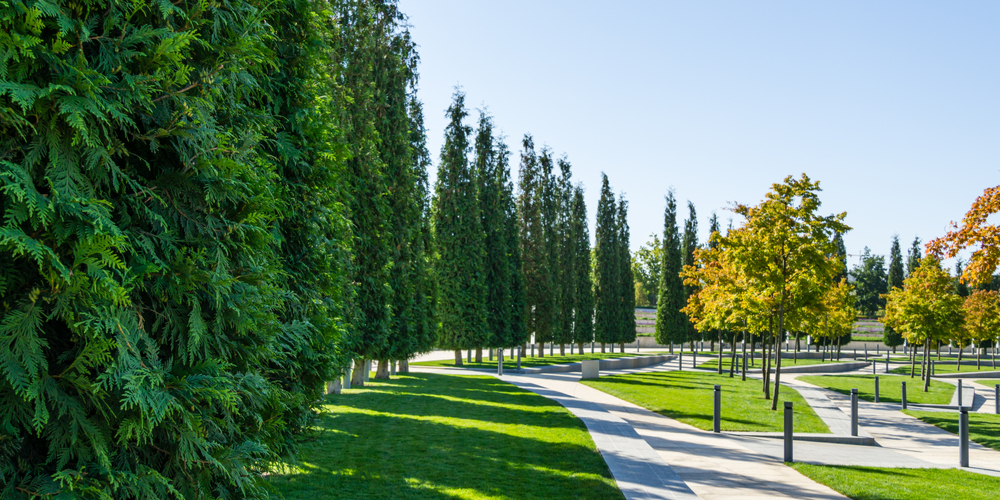Arborvitaes are conifers, with needle-like leaves and an evergreen appearance. They are sensitive to trimming, which means if you overdo it, the new development will not be stimulated. Too much pruning can also kill your trees. However, that doesn’t mean you shouldn’t trim your overgrown arborvitaes. The general rule is never to cut off more than a third of your plant regardless of the season. Besides that, always cut less than a foot of any branch. Anything longer than that will scar or damage your plant.
How to prune or trim Overgrown Arborvitae

When trimming your arborvitae, use the right tools such as shears. Avoid cutting back too far; this can stunt its growth permanently. The best parts to trim are the green parts, as they can regrow again. The plant will die if you touch the brown areas because the old parts cannot regrow. You can check for greenwood by scratching it to see what color lies underneath.
The best way to prune overgrown arborvitae is to work on small sections and avoid the temptations to cut off bigger sections. Your main target should be the vertical branches at the back because they shade the bottom part of your tree and slow its growth. Besides, removing some of the upright stems in the mid-section of the tree allows sunlight and air circulation in the tree. This keeps the tree healthier while lowering the risk of common diseases.
As you trim, monitor the shape your tree is taking. If not careful, you might take off more twigs than you intended to—tackle one area at a time. For example, start with the middle, move to the top and eventually deal with the bottom.
Trimming overgrown arborvitaes are done in two main ways. They include branch reduction and branch removal. The reduction cut means shortening the length of branches by cutting them back on the sturdier and thicker section of the particular branch. In the removal trimming method, you cut off the branch from the tree. Both ways require keenness and a nice set of shears. For tall arborvitae, get a ladder, and you are ready to trim your tree.
When Is The Right Time To Prune An Overgrown Arborvitae?
Timing is essential before you trim your plants. The best time for arborvitaes is their growing season, early spring, mid-spring, and early summer. Trimming your tree at the wrong time can attract disease and pests, while some cause permanent scars and eventually kill the tree.
Reasons to Prune Arborvitaes
Arborvitae trees do not need a lot of pruning. However, there are times when pruning must be done. Some of the issues that can only be addressed by trimming include reshaping due to unexpected interferences such as wildlife. Other things that require to be cut off are growth abnormalities, width and height, and appearance.
The natural shape of arborvitae is a pyramid where the top is slimmer than the bottom. However, if you have wildlife eating your tree’s leaves, you leave more at the top and have a lighter base.
The right tools for trimming arborvitae
The needle-like leaves of the arborvitae trees are easy to cut. If your tree is still young with soft branches less than a half-inch thick, use a pair of hand pruning shears. If they are over one inch thick, lopping shears will work. Any branch over one inch thick requires a bow or pruning saw. Make sure your tools are sharp for clean cuts. Blunt shears can tear or rip branches increase their chances of becoming diseased. To ensure your trees are negatively affected, sterilize your tools before trimming. You can use ethanol or isopropyl alcohol.
When You Should Never Trim Arborvitae
You should never trim your arborvitaes during the peak of summer or winter. Do not touch your plants when it’s extremely hot or cold. But, sometimes, you may have to do some emergency pruning if a branch dies or is diseased any time of the year.
How to Trim Overgrown Arborvitae: Conclusion
Arborvitae trees are evergreens and look magnificent with proper trimming. Their pyramid shape increases the beauty of your outdoor space effortlessly. Shape your trees to your preference and ensure they are well-shaped. They do not have to be pyramidal; they can also be columnar or globular.
Related Article: How long do Emerald Green Arborvitae Live?

